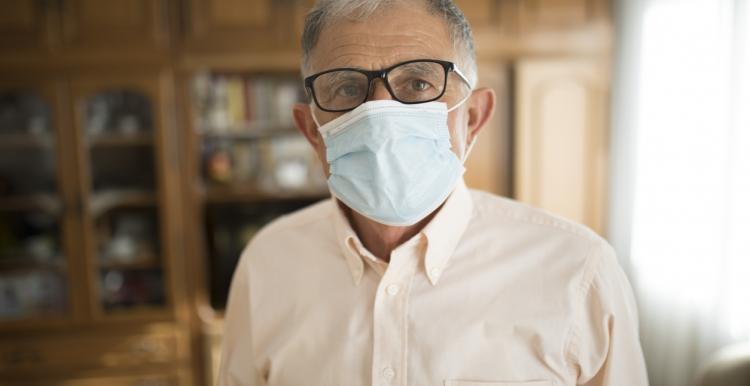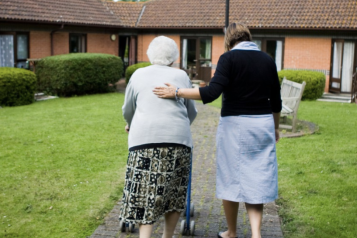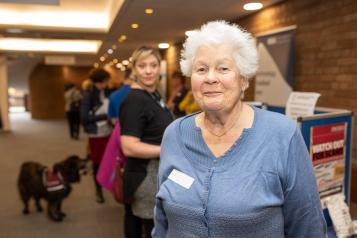What you need to know when visiting a care home (new guidance for COVID-19)

The arrival of COVID-19 has meant that a number of restrictions have been placed on care homes to prevent the spread of infection and ensure the health and safety of both care workers and its residents.
As the rate of infection is decreasing across the country, these restrictions are being lifted however a number of changes will be put in place to keep you and your loved ones safe.
This guidance has been taken from gov.uk.
When will I be able to visit a care home?
All decisions on the circumstances, times and frequency of visits to care homes will ultimately be made by the care home providers themselves. These decisions should be made in line with advice from local directors of public health, who will be developing local ‘dynamic risk assessments’ based on the principles outlined in the government’s guidance.
Please be aware that whilst the ability to visit care homes is looking to increase, it is still being controlled based on these risk assessments and is subject to the specific circumstances of the care home and those living and working within it. This is likely to mean that the frequency of visits will be limited and/or controlled for some time.
What advice should I expect?
Advice for residents and families should be set out in the visiting policy of the care home and shared with you.
This advice should include:
- support on how to prepare for a visit and given tips on how to communicate if face coverings are required, for example:
- speaking loudly and clearly
- keeping eye contact
- not wearing hats or anything else that might conceal their face further
- wearing clothing or their hair in a way that a resident would more likely recognise - reassurance, including the fact that some people with dementia might struggle at first to remember or recognise you.
Care home staff should try and prepare your loved one for a visit, perhaps by looking at photographs of the person who is due to visit and talking to them about their relationship.
Go to full guidance
For the most up to date guidance, including information of what should be included in your care home’s visiting policy, visit the Gov.uk website.
Do I need to take a test to be able to visit my relative?
No, however if you are displaying any symptoms of coronavirus you should not visit the care home, self-isolate and order a test immediately.
You may be asked screening questions upon arrival. These include:
- Have you been feeling unwell recently?
- Have you had recent onset of a new continuous cough?
- Do you have a high temperature? A care home may consider providing a temperature check for all visitors to provide confidence to visitors and to staff.
- Have you noticed a loss of, or change in, normal sense of taste or smell?
- Have you had recent contact (in the last 14 days) with anyone with COVID-19 symptoms or someone with confirmed COVID-19 – if yes, should you be self-isolating as a family member or as a contact advised to do so by NHS Test and Trace?
How do I travel to the care home?
It is encouraged that you walk to the home or use your own transport where possible.
It might be that some assistance is required to enable visitors who are especially vulnerable to get to the care home. Care homes may consider giving visitors telephone numbers or website information of organisations which can offer advice on safe travel arrangements if required.
What is likely to change when I visit my loved one?
You can expect to see a number of changes but remember they are to keep you and your loved ones safe. These include:
- Care workers will use Personal Protective Equipment (PPE) in line with guidance from Public Health England and you are will be asked to wear a mask and/or visor when you are in the building. If you are making close personal contact with a resident you may need to wear PPE which goes beyond a face covering.
- Care homes with an ‘open door’ policy may have to work towards a more regimented booking system. Ad hoc visits are not advised.
- Care homes should support NHS Test and Trace by keeping a temporary record (including address and phone number) of current and previous residents, staff and visitors, as well as keeping track of visitor numbers and staff.
- Visitors should have no contact with other residents and minimal contact with care home staff (less than 15 minutes / 2 metres). Where needed, conversations with staff can be arranged over the phone following an in-person visit
How many people can visit a care home at a time?
To limit risk, where visits do go ahead, this should be limited to a single constant visitor, per resident, wherever possible. This is in order to limit the overall numbers of visitors to the care home and the consequent risk of infection.
Will I need to wash my hands or use hand sanitiser?
Yes, visitors should be reminded and provided facilities to wash their hands for 20 seconds or use hand sanitiser on entering and leaving the home, and to catch coughs and sneezes in tissues and clean their hands after disposal of the tissues.
What happens if I can’t see my family or friend in the care home?
If there is a restriction to visitors in place, alternative ways of communicating between residents and their families and friends should be discussed and offered. The care home should also provide regular updates to residents’ loved ones on their mental and physical health, how they are coping and identify any additional ways they might be better supported, including any cultural or religious needs.
Visits to a COVID-19 positive resident should only be made in essential circumstances (for example, end of life).
Get in touch
Do you want to talk to someone about what these changes mean for care homes near you? Talk to a member of our team.
What happens if there is an outbreak at the care home?
If there is a declared outbreak in a care home then the visiting guidance will need to be restricted for a period of time until the care home has been assessed to be in recovery. You should be informed of this.
What happens if there is a local lockdown?
In the event of an outbreak in a care home and/or evidence of community hotspots or outbreaks leading to a local lockdown, care homes should rapidly impose visiting restrictions to protect vulnerable residents, staff and visitors.
In this situation care homes should set out alternative options to maintain social contact for their residents while providing regular, personalised updates to residents’ loved ones.


